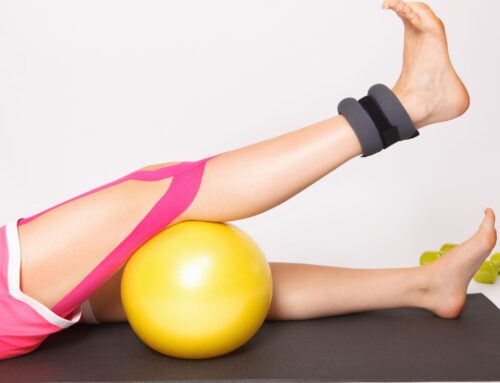When you are falling, your automatic reaction is to straighten your arms to “cushion” or “break” the fall. This instinct serves as a way to protect the head and face from making contact with the ground. However, with this type of reaction, a fall onto outstretched hand (FOOSH) injury to the wrist or hand may occur.[i]
Falls are the leading cause of injury for senior citizens. More than 20% of seniors in Canada experience one or more falls each year. [ii] In those who are injured, 8% of the injuries are related to the wrist, 4% to the hand, 17% to the shoulder/upper arm, and 4% to the elbow and lower arm. This means that when senior falls, approximately 33% of the injuries reported are in the upper extremity.[iii]
In this article, we look at the types of injuries that can occur as a result of a FOOSH. We will discuss the common mechanisms that lead to these injuries and how a physiotherapist can help diagnose the injuries, as well as develop a treatment plan that can help to improve the mobility, strength and stability of the affected areas.
What is a FOOSH Injury?
A FOOSH injury is essentially any abrupt force distributed to the hand or wrist region after a person falls or loses balance and uses their hand to stop the motion. Fractures, sprains, torn ligaments, bruising, and irritated tendons may occur as a result.
A FOOSH is the mechanism of injury that explains why and how something was injured in the first place. A person may experience one or more of the following types of injuries as a result of a FOOSH:
- Scaphoid Fracture
- Triangular Fibrocartilage Complex (TFCC) tears
- Wrist Sprains
- Tendinopathy
- Distal Radial Ulnar Joint sprain
- Elbow hyperextension
- Radius/ulnar fracture
- Shoulder sprain
- Shoulder subluxation
The hand and wrist are vastly complex with 27 bones per side, in addition to the associated ligaments that connect them together, and the nerve, arteries and veins that run through those joints.[iv] Common mechanisms of injury during the winter months are slipping on ice, falling during winter sports (e.g., skiing, skating, snowboarding), and ascending/ descending stairs outdoors.
FOOSH Injury Physiotherapy
If you find yourself suffering because of a FOOSH injury, it is best to get assessed by a health professional to determine the exact issues at hand. Your registered physiotherapist can help to diagnose a possible strain, sprain, or fracture to the area. Also, the assessment will help to determine which other areas of the body were affected by the injury, such as the elbow, shoulder, and neck —especially if it was a big tumble.
Outcome measures for strength, sensation, stability, range of motion, function, and disability may be applied by your physiotherapist to get an accurate understanding of how your FOOSH injury has affected your life. In addition, your physiotherapist will help to guide you back to your physician for further diagnostic investigation (e.g., X-rays, ultrasound), If appropriate.
During your treatment sessions, your physiotherapist will help to demonstrate exercises that are aligned with your goals and rehabilitation. Exercises that help to improve the mobility, strength, and stability of the wrist, forearm, hand and fingers will be prescribed. A brace may be prescribed and leukotape, athletic tape, or kinesiology tape will be administered to provide comfort and stability, as necessary.
In addition, you may require the use of a brace (hard or soft) for additional support for the wrist and hand area. Listen to your physiotherapist to determine how long you should use your brace and in what situations the brace would be beneficial.
Depending on the severity of the FOOSH, your physiotherapist may tell you to begin exercises immediately after the period of immobilization. Some report that exercises can feel tiring and sore at the beginning, but eventually become easier as the muscles and joints become familiar with movements again.
The rehabilitation to FOOSH injuries should not be put off for another day. The earlier the rehabilitation process begins, the earlier you can recover and regain the function you want in your upper extremity. Contact us today for a complimentary consultation or to book an assessment of your FOOSH injury.
References
[i] https://www.healthline.com/health/foosh#diagnosis
[ii] https://www.canada.ca/en/public-health/services/health-promotion/aging-seniors/publications/publications-general-public/seniors-falls-canada-second-report/seniors-falls-canada-infographic.html
[iii] https://www.canada.ca/content/dam/phac-aspc/migration/phac-aspc/seniors-aines/publications/public/injury-blessure/seniors_falls-chutes_aines/assets/pdf/seniors_falls-chutes_aines-eng.pdf
Written by

















